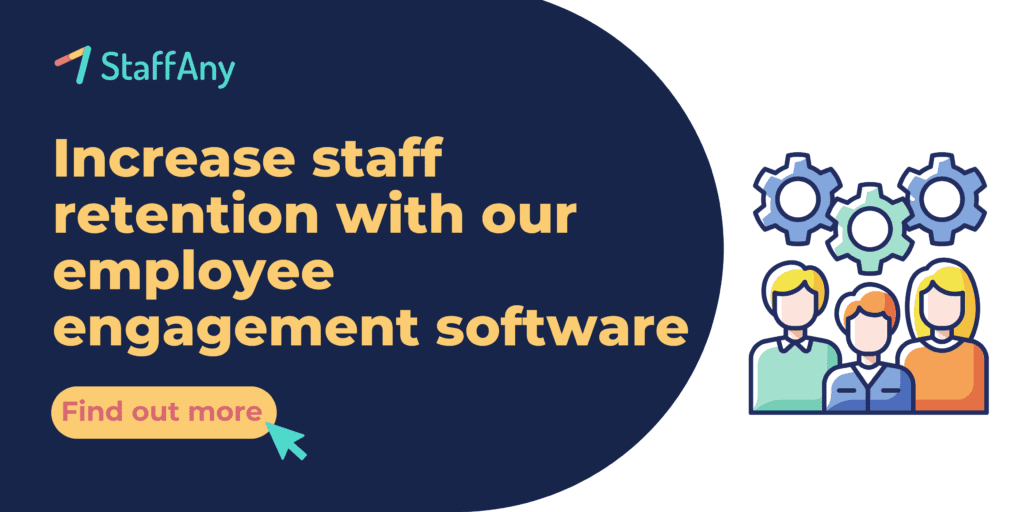Employee motivation is like the secret sauce that makes a restaurant successful. When restaurant employees are motivated, they’re more likely to do their job well, provide excellent customer service, and contribute positively to the restaurant’s reputation.
However, F&B business entrepreneurs around the world have always struggled to keep their staff motivated to work. In fact, based on the findings of a workplace mental health study, F&B is one of the top three industries with the most unhealthy workplaces that often leave workers unmotivated to perform at their best.
The F&B industry in Singapore shares the same challenges regarding the motivation aspect despite the country being famous for its food culture and Michelin rated eateries. Based on research on the career and wealth landscape in Singapore, Singaporeans believe that a career in the F&B industry is less desirable than it was a decade ago, possibly due to concerns over long working hours, intense competition and perceived instability in the sector. Another study has revealed that 41% of Singaporeans would rather stay jobless than stick with a job that makes them unhappy.
So what can be done to keep employees motivated and give their best to the F&B business? Monetary rewards are one way to help encourage employees to increase their performance and meet their targets. It is a well-known belief that most people are not really motivated to work if money is not attached to it. So, using money as an incentive in the workplace can be quite effective in motivating employees to work harder and promoting employee engagement.
Monetary Rewards as a Traditional Motivator Approach
Monetary rewards, such as salary hikes and bonuses, or service tips, are a common practice in the business world, including F&B, because they serve various purposes. Firstly, they act as a primary form of compensation, meeting employees’ basic needs and motivating them to work. Secondly, these rewards are tangible and easy to measure, making them an effective way to acknowledge and reward employees for their efforts.
Read: 8 Types of Allowance for F&B Employees
In Singapore, the government through the Ministry of Manpower is helping to create better monetary rewards by issuing rules for F&B workers’ wages that are higher than the previous period. This year entry-level local workers in the food services industry must be paid at least S$1750 under the progressive wage model.
However, in the F&B industry, where staff often work long hours and deal with challenging customer interactions, monetary rewards cannot always keep staff motivated because they are prone to mental labor burnout.
Concept of Non-monetary Motivators
The relationship between motivation and monetary rewards in the workplace is often a complex one. In the fast-paced workplace like eateries, increasing monetary rewards may not be the sole or most significant driver of long-term motivation and job satisfaction. Monetary rewards are only one piece of the motivation puzzle as it takes a holistic approach that includes both monetary and non-monetary motivators for workers to be fully motivated.
A non-monetary motivator is something that makes employees feel good about their work without giving them extra money. It’s like saying “great job” or helping them learn and grow at work. These motivators focus on making work more enjoyable and meaningful, like having a nice work environment, flexible shift hours, or feeling like you belong to a team. They help employees feel happier and more committed to their job, which can make them work better.
For the new generation of workers, having a positive work environment and good company culture are incredibly important. They want to work in a place where they feel supported and valued, where they can be themselves, and where their well-being is a priority.
A positive work environment means they enjoy coming to work, and a good company culture ensures they have a sense of belonging and purpose. Additionally, having a healthy work-life balance allows them to have a life outside of work, which is crucial for their overall happiness and well-being. These factors not only attract and retain new generation workers but also boost their productivity and job satisfaction.
According to a study on attrition and its connection to rewards, companies that provided non-monetary rewards to employees reported an attrition rate of 11% in 2022. This was significantly lower compared with the average attrition of about 16% for the companies covered in the study.
Creating a Culture of Recognition
Employee recognition means the different ways a company says “thank you” to its employees for doing a great job. This can be done in many ways, and it doesn’t always involve monetary compensation. Companies use recognition to appreciate employees for their achievements, for behaving the way the company wants, for doing more than expected, and for reaching important milestones like working there for a long time.
Why is employee recognition important? From a young age, we all want to hear good things from our parents, teachers, and friends. We like it so much that sometimes, even when someone doesn’t say anything bad, we might think it’s not good enough. This feeling sticks with us when we start working. In places like restaurants, recognizing employees helps keep the best workers, makes them more excited about their jobs, and helps them do their best.
However, creating a culture of recognition in the work environment of small and medium-sized food and beverage businesses can be challenging due to the lack of a dedicated team to implement them. This is where technology comes in to help those who are looking to improve employee engagement and organizational performance.
How EngageAny Helps Employees to Stay Motivated
Technology can be a valuable tool for workplace motivation by improving recognition and communication. StaffAny understands the limitations that small and medium-sized F&B businesses have when they want to explore innovative solutions and strategies to improve staff motivation.
Through a new technology called EngageAny, we at StaffAny offer solutions that not only drive efficiency and productivity, but also build a culture that encourages employee retention. Here are two ways F&B businesses can use EngageAny technology to keep employees motivated at work.
Non-monetary Rewards
Non-monetary rewards are needed to create a positive work environment and good company culture. In addition, these non-monetary rewards also encourage the creation of a healthy workplace and increase the overall happiness and well-being of the staff.
EngageAny has a Create Your Own Challenges feature where staff can create their own gamification tasks that align with their workplace goals. This feature can be used to deliver non-monetary rewards such as more leave days or support for career acceleration. For example, when an employee wants to earn extra vacation days, he discusses the idea of a work challenge with his manager to create a challenge in the EngageAny tool that rewards a certain number of vacation days. If he successfully completes the challenge within a certain period of time, then with the manager’s approval he will have an additional day off.
Gamification
Gamification is a creative approach to infusing more excitement and engagement in the workplace. By integrating elements from games into daily tasks and responsibilities, companies can foster a more fun and interactive work environment. This can involve setting clear goals and objectives, using rewards and recognition to motivate employees, encouraging teamwork through group challenges, and providing real-time feedback to improve performance. When employees find their work more fun and engaging, it tends to increase their motivation, productivity, job satisfaction, and overall well-being.
Gamification serves as a powerful tool to improve employee engagement and performance across a wide range of organizations. For example, with EngageAny you can create a gamification challenge for the first 30 days of work for new employees. They will be rewarded with coins that are automatically calculated based on the number of tasks they complete within a certain period of time. With these coins, staff can redeem various rewards from the Rewards Catalog.
Are You Ready With New Ways to Motivate Your Restaurant Staff?
Prepare yourself to unlock the potential of EngageAny, a unique offering exclusively brought to you by StaffAny! Are you ready to seamlessly integrate the power of EngageAny into your business? Don’t hesitate any further!
Learn more about EngageAny here.












